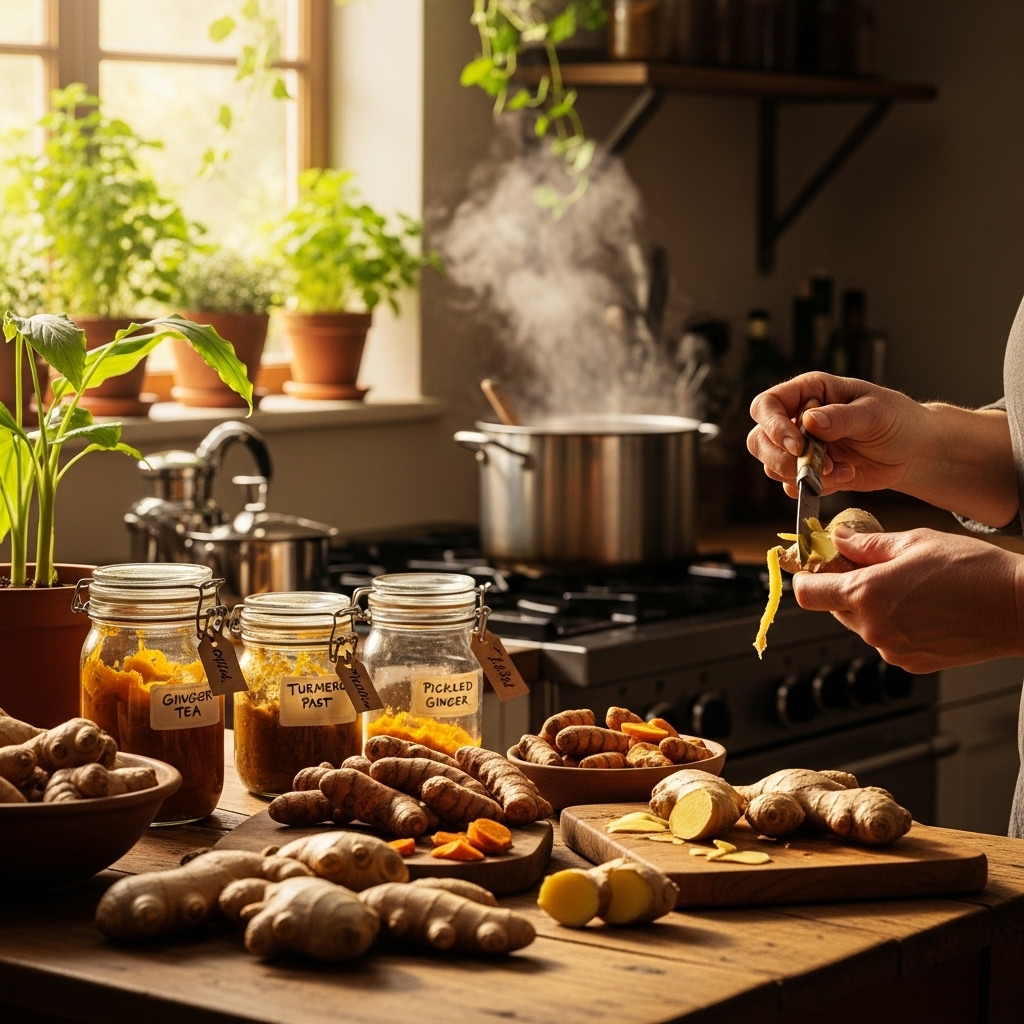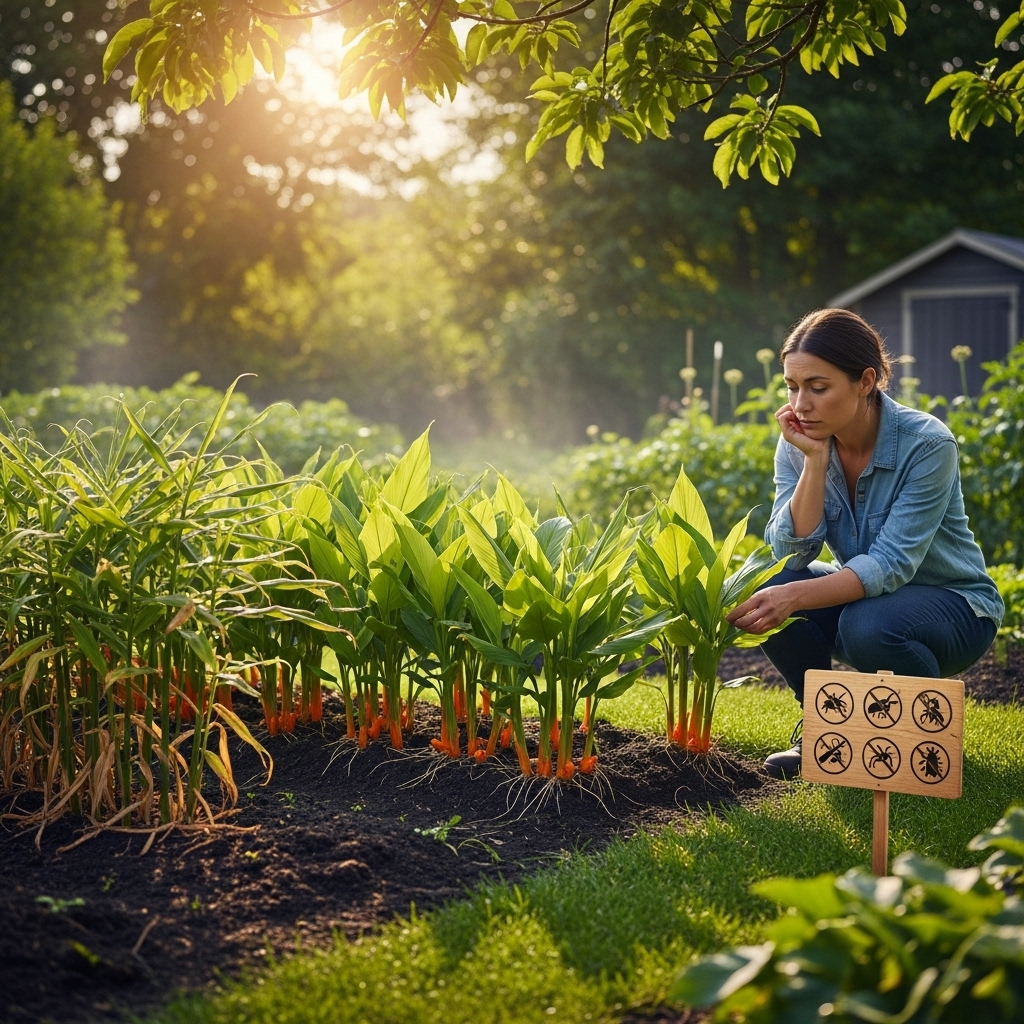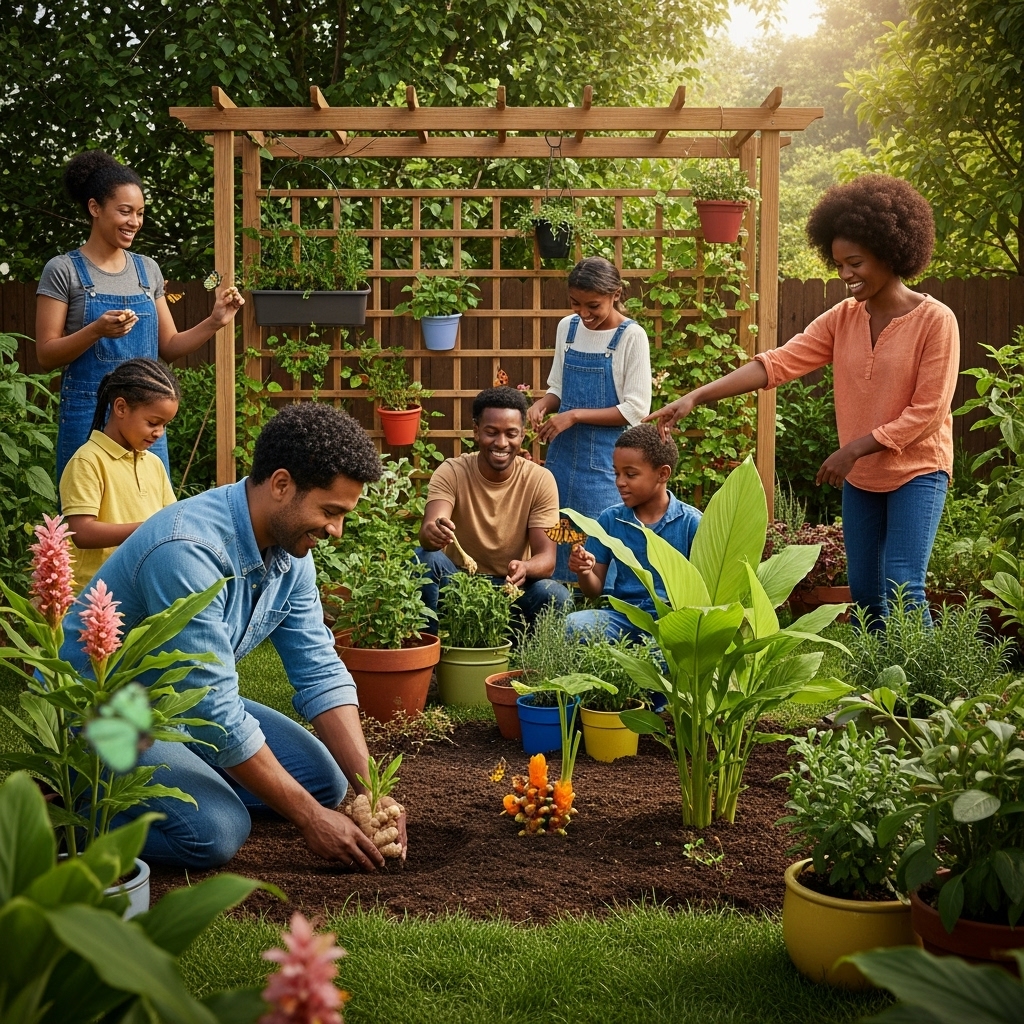Imagine stepping into your garden and harvesting your own ginger and turmeric, two powerful roots packed with flavor and health benefits. In this guide, I’ll share how to cultivate these amazing plants right in your backyard.
Understanding Ginger and Turmeric: A Deep Dive

Before I embark on my gardening adventure, I believe it’s essential to understand the plants I want to grow. Ginger and turmeric are not just culinary delights; they are also celebrated for their medicinal properties. Ginger (Zingiber officinale) is known for its anti-inflammatory and antioxidant effects, while turmeric (Curcuma longa) boasts curcumin, a compound linked to numerous health benefits, including anti-inflammatory and anti-cancer properties. I often find that knowing the background of these plants deepens my appreciation and motivates me to care for them more diligently.
The Benefits of Growing Your Own
Growing ginger and turmeric in my garden has been a rewarding experience. Not only do these plants provide fresh ingredients for my cooking, but they also offer a range of health benefits right at my fingertips. By cultivating them myself, I can ensure that they are grown organically and without harmful pesticides. Furthermore, there’s something incredibly fulfilling about nurturing a plant from a small piece of rhizome to a bountiful harvest.
Additionally, ginger and turmeric are relatively low maintenance. They thrive in warm, humid conditions, making them perfect candidates for most home gardens. The journey from planting to harvest is straightforward, and the satisfaction I feel when I dig up my first roots is unparalleled.
Choosing the Right Variety
As I began my journey into growing ginger and turmeric, I learned that selecting the right variety is key. For ginger, I usually opt for the common culinary type, which is widely available. It’s essential to choose fresh, plump rhizomes, so I make sure to purchase them from a reputable source. Organic grocery stores or farmers’ markets are often great places to find what I need.
When it comes to turmeric, I prefer the ‘Indian’ variety, known for its vibrant color and strong flavor. Like ginger, I always look for fresh rhizomes that are firm and not shriveled. It’s important to note that both ginger and turmeric can be grown from store-bought rhizomes, but I make a point to choose organic ones to ensure they are free from chemicals.
Preparing for Planting
Once I have my rhizomes ready, the next step is preparing the soil. Both ginger and turmeric thrive in rich, well-draining soil. I usually start by mixing compost into the soil to improve its fertility. This adds essential nutrients that will support the growth of my plants. The soil pH should ideally be between 6.0 and 6.5, which I check with a soil test kit. Adjusting the pH can be done with various amendments, such as lime or sulfur, depending on my soil’s current condition.
I also ensure that the planting area receives partial shade. In my experience, both ginger and turmeric prefer indirect sunlight, especially during the hottest part of the day. I typically choose a location in my garden that gets dappled sunlight or partial shade, which helps to create the perfect growing environment.
Planting Techniques
When it comes time to plant, I find that cutting the rhizomes into smaller pieces can be beneficial. Each piece should have at least one ‘eye’ or bud. I plant these pieces about 2-4 inches deep in the soil, making sure to space them at least 12 inches apart. This allows each plant enough room to grow without competing for nutrients.
After planting, I give the area a good watering to help settle the soil around the rhizomes. Keeping the soil moist (but not waterlogged) is crucial, especially in the initial stages of growth. I’ve learned that consistent moisture encourages healthy sprouting, which I eagerly anticipate.
Caring for Ginger and Turmeric
As my ginger and turmeric plants begin to grow, I pay close attention to their care. Watering is one of my top priorities; I try to maintain consistent moisture, particularly when the plants are establishing roots. I’ve found that using mulch helps retain soil moisture and suppress weeds, which is a win-win for my garden.
Fertilization is another aspect I focus on. I typically apply a balanced organic fertilizer every 4-6 weeks during the growing season. This supports healthy growth and ensures that my plants are receiving the nutrients they need. I also keep an eye out for pests and diseases, although I’ve had good luck with ginger and turmeric being relatively pest-resistant. If I do notice any issues, I take prompt action, often using neem oil or insecticidal soap as my go-to remedies.
Harvesting Your Ginger and Turmeric
After several months of nurturing my plants, the anticipation of harvesting ginger and turmeric builds. Ginger is usually ready to be harvested about 8-10 months after planting, while turmeric requires a bit more patience—generally around 9-10 months. I’ve learned to look for signs like yellowing leaves and dying back, which indicate that it’s time to dig them up.
When the time comes, I carefully loosen the soil around the rhizomes with a garden fork, taking care not to damage them. Gently pulling them from the ground is always exciting, as I’m often rewarded with plump, vibrant roots. I rinse them off to remove excess soil and allow them to dry before storing or using them in my cooking.
Having my own supply of freshly harvested ginger and turmeric feels like a true blessing, and I’m always eager to share my bounty with friends and family. The satisfaction of knowing I grew these plants from scratch makes every meal I prepare with them feel special.
Storing and Using Your Harvest

Once I’ve harvested my ginger and turmeric, the next step is ensuring that I store them properly to maintain their freshness and flavor. For ginger, I typically leave the skins on as they help protect the rhizomes from moisture loss. I find that storing unpeeled ginger in a paper bag in the refrigerator keeps it fresh for a few weeks. Alternatively, I can place it in a container with a damp paper towel to maintain an optimal humidity level. If I have an abundant harvest, freezing is an excellent option. I peel and slice the ginger before placing it in an airtight container or freezer bag, which allows me to have ready-to-use ginger at my fingertips whenever I need it.
Turmeric, on the other hand, can be a bit trickier to store because it can stain surfaces and hands. I prefer to keep unpeeled turmeric rhizomes in a cool, dark place, similar to how I store ginger. Once again, should my harvest be plentiful, I can opt to freeze the turmeric. I often find that grating fresh turmeric is easier when it is frozen, and it adds a lovely, vibrant note to my dishes.
Incorporating these two roots into my daily meals has been a delightful journey. I love adding freshly grated ginger to my morning smoothies or using it in stir-fries for an added kick. Turmeric, with its earthy flavor, finds its way into my curries, soups, and even golden milk lattes. I’ve also experimented with making my own turmeric paste, which I can use in various recipes or as a health tonic. The versatility of these ingredients means I can adapt them to suit whatever dish I’m preparing, infusing my meals with their unique flavors and health benefits.
Potential Challenges and Solutions

While growing ginger and turmeric has been largely rewarding, it’s not without its challenges. One of the most common issues I’ve encountered is the risk of rot. Since both plants prefer moist soil, it’s crucial to find a balance. I’ve learned to ensure that my planting area has good drainage to prevent water accumulation. Raised beds have been a great solution for me, as they promote drainage while still allowing for the moisture my plants crave.
Pests can also be a concern, although, as I mentioned earlier, I’ve been fortunate. However, aphids and spider mites can occasionally show up. To prevent infestations, I regularly inspect my plants and encourage beneficial insects, like ladybugs, into my garden. I’ve found that introducing companion plants, such as marigolds or basil, can naturally deter pests while enhancing the garden’s biodiverse ecosystem.
Another challenge I faced was identifying the proper time for harvesting. If I harvest too early, the rhizomes may not have developed their full flavor. Conversely, leaving them in the ground for too long can lead to deterioration. I’ve since marked the planting dates on my calendar and keep a garden journal to track growth and any signs of readiness, which has proven invaluable.
Expanding Your Herbal Garden

As I’ve gained experience growing ginger and turmeric, I’ve felt inspired to expand my herbal garden further. This journey has opened my eyes to the myriad of herbs and spices that can flourish in my backyard. I’ve started experimenting with growing garlic, lemongrass, and even basil, which pairs beautifully with ginger in many dishes. Each new plant introduces its own set of care requirements and flavors, enriching my culinary repertoire.
Additionally, I’ve discovered the joy of creating herbal teas. Using fresh ginger and turmeric, I brew comforting teas, often adding honey and lemon for a delightful kick. This not only contributes to my overall wellness but also provides a soothing ritual that I look forward to at the end of the day.
As my herbal garden continues to grow, I’ve started sharing the experience with friends and family. I often invite them over for a garden tour, showcasing the plants I’ve cultivated and sharing freshly made dishes featuring my harvest. This sense of community brings a new dimension to my gardening journey, as we exchange tips and recipes, bonding over the joy of growing and eating fresh produce.
Final Thoughts
Growing ginger and turmeric has not only transformed my gardening experience but also enriched my life. The satisfaction of nurturing these plants from rhizomes to harvest is a rewarding journey that I wholeheartedly recommend to anyone interested in gardening. The flavors and health benefits they bring to my kitchen are undeniable, and I’ve loved sharing this passion with others. Each time I use my homegrown ingredients, I’m reminded of the beauty of nature and the rewards of hard work.
